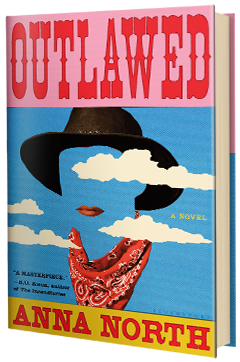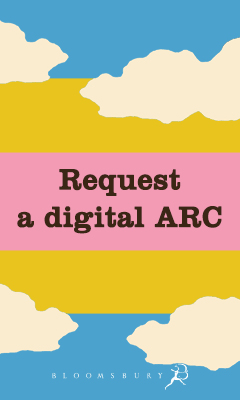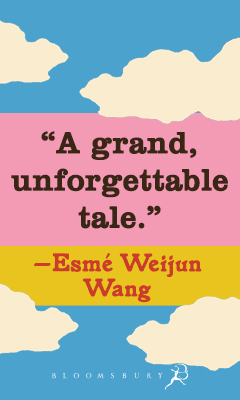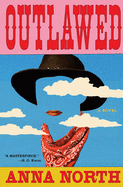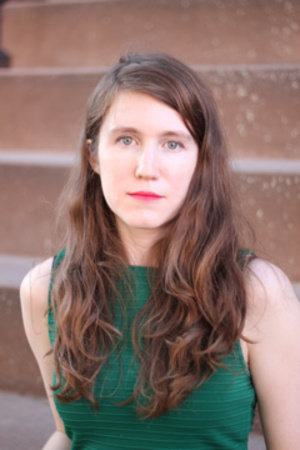Outlawed
by Anna North
Outlawed by Anna North (America Pacifica; The Life and Death of Sophie Stark) is a wild, ripping western with a firm feminist bent, set in an alternative North America.
"In the year of our Lord 1894, I became an outlaw." Some decades ago, the Great Flu decimated the national population, the United States government collapsed and, in its place, the people established Independent Towns west of the Mississippi. Ada has grown up in the Independent Town of Fairchild, where she has lived a good enough life. Her mother is a skilled midwife; Ada excels in her own training in the profession and helps care for her beloved three younger sisters. She marries at 17, as girls do when they become able to reproduce, and so begins the serious and sacred work of trying to become pregnant. But when six months pass, then more, Ada begins to worry. To be barren in Fairchild is a crime punishable by death.
At the end of a year, her husband's family rejects her, and Ada's mother sends her to the Sisters of the Holy Child, hoping to keep her safe. In the nunnery's library Ada continues to read and study, seeking the truth about infertility; her mother had taught her, against popular belief, that barrenness was a medical condition and not witchcraft, but the details are not well understood. It is not a wish to have children herself, but Ada's hunger for knowledge that drives her from Holy Child and further west, to join up with the infamous Hole in the Wall Gang. This band of outlaws is led by the Kid, "nearly seven feet tall, the sheriff said, and as strong as three ordinary men put together. His eye was so keen he could shoot a man dead from a mile away, and his heart was so cold he’d steal the wedding ring from a widow or the silver spoon from a baby’s mouth." But like everything else Ada has been taught, these stories aren't quite accurate. The Kid is charismatic, beloved and possibly dangerous in entirely different ways than the rumors insist, and the outlaws are not what they are thought to be. It is only in the West that it occurs to Ada that "perhaps barren wives were not hanged for witches everywhere."
Outlawed is a delightful tale of adventure, rebellion, the importance of knowledge and the value of family--however family is made or defined. With the Hole in the Wall Gang, Ada finds unexpected freedoms and fluid gender roles, and is forced to consider what she has to offer her new friends and the world. "I don't think I'm much of a threat," she tells the Mother Superior when she leaves Holy Child, but her story is just beginning.
In her new life of crime, Ada learns to care for horses, to shoot and to be a member of a community she's chosen and loves. As the gang plans and attempts robberies, North's narrative is often lighthearted, with style, humor and a sense of fun, but her protagonist never forgets the high stakes. Ada meets men and women who are not what they seem, including an actor who's studied male dress, movements and mannerisms because "the male roles were the most prestigious." She becomes aware of not only gender but also race as a point of prejudice and contention in North's version of the Wild West. She learns new skills to supplement her midwife training; she treats gunshot wounds and mental illness and comes to be called Doctor. She learns to carry herself differently. But she never stops worrying about the sisters she's left behind in Fairchild, who are vulnerable to punishment simply for their relationship to Ada, "a barren woman, a discarded wife, an outlaw wanted for cursing women's wombs even though I had helped coax dozens of babies into the world." Ada does not take naturally to the business of holding up stagecoaches or robbing banks, but her devotion to her new group of friends forces her to take risks. Eventually she must choose to invest in their future, or strike out on her own again.
Part of the genius of Outlawed is that its feminist themes juxtapose neatly with the traditionally male-dominated western genre. In Ada's first-person narration, the critical significance of reproduction and fertility seems simply a background element, central to the workings of North's fictional world, which is in itself curious and thought-provoking. Ada's voice is perfectly authentic and easily believable: her developing rebellion is organic, born of her love for her family and friends. She is a maverick, and the best kind of heroine: adventurous, innovative, self-doubting but brave, with intense loyalty and a magnetic, compelling curiosity.
Outlawed boasts a lively, quick-paced plot, a well-constructed alternate-historical setting and an indomitable heroine. While North clearly has something to say about gender in society and the politics of reproduction, this novel is absolutely a work of energetic literary entertainment first. For all readers in all times. --Julia Kastner



